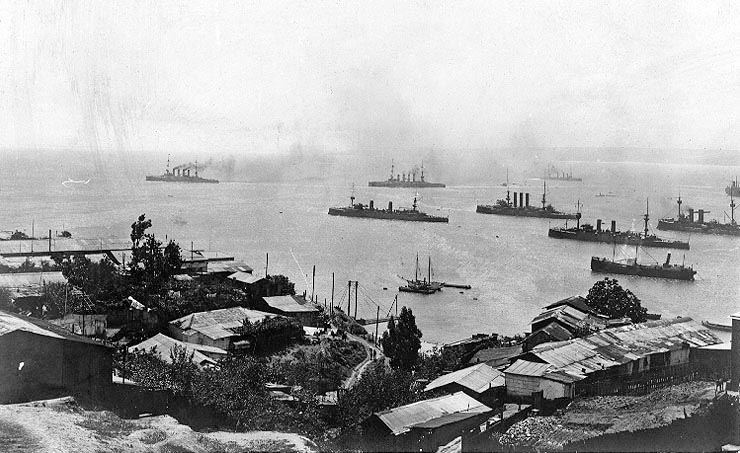|
East Asia Squadron
The German East Asia Squadron () was an Imperial German Navy cruiser squadron which operated mainly in the Pacific Ocean between the mid-1890s until 1914, when it was destroyed at the Battle of the Falkland Islands. It was based at Germany's Jiaozhou Bay Leased Territory in China. Background The Treaty of Peking of September 1861 between the Kingdom of Prussia and China allowed Prussian warships to operate in Chinese waters. As East Asia grew in economic and political importance to the recently united Germany, in 1881, a flying squadron was formed for the area under the command of a flag officer. Since African colonies were then seen as of greater value, an African Cruiser Squadron was established in 1885 with permanent status, and shortly thereafter the Imperial German Navy reduced the East Asia presence to two small gunboats. From 1888 to 1892, was flagship of the German East Asia Squadron, initially under Vice Admiral Karl August Deinhardt, appointed 14 July when the ship w ... [...More Info...] [...Related Items...] OR: [Wikipedia] [Google] [Baidu] [Amazon] |
